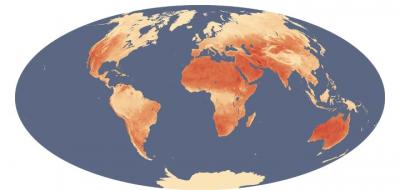The Latest 21st Century Projections of Temperature and Precipitation Changes
A large multidisciplinary effort has produced new anthropogenic emission scenarios for the 21st century exploring alternative futures for humanity’s socio-economic development based on the Shared Socioeconomic Pathways (SSPs). Now climate modelers ran these scenarios through their earth system models and produced corresponding climate system changes. This paper synthesizes results for temperature and precipitation changes over the coming decades, comparing SSP-based scenarios with lower or higher mitigation levels. The scenarios considered produce global warming of over 5 ºC (highest emissions) and as low as 1.5 ºC (highest mitigation). The 1.5 ºC threshold - the goal of the Paris Agreement - is, on average across models, projected to be reached within the current decade no matter the scenario.
Many different types of research concerned with future global changes base their analyses on these types of scenarios/earth system model outcomes. This paper will provide the necessary backdrop for many of these studies, including those focused on changes expected in the climate system, impacts of climatic changes on human and natural systems, or mitigation choices and their consequences. The study also shows the concerted efforts of the many scientists around the world that have developed the latest generation of Earth system models (including the Energy Exascale Earth System Model) and used them to explore the new future emission scenarios, which involved large investments in human and computational resources.
This overview paper reports temperature and precipitation changes across SSP-based scenarios from the Scenario Model Intercomparison Project of the Coupled Model Intercomparison Project Phase-6, describing a range of global temperature changes from the attainment of the Paris agreement ambition of 1.5 °C to global warming in excess of 5 °C. It includes precipitation projections that correspond to different temperature changes. It highlights robust results across various models and includes sources of uncertainties. There are no striking surprises in the geographic features in the patterns of warming, wetting, or drying, where the first-order change is in the overall intensity and linked to the magnitude of global warming. Overall, the Arctic and northern regions warm the most, land warms more than the ocean, and regions like the Mediterranean, the Amazon, South Africa, and Australia will see strong drying. Some new models do show a higher sensitivity to greenhouse gas forcing, producing new global warming projections that tend to be higher than those of previous generations. These extreme changes cannot be excluded but receive less weight if these models’ ability to reproduce historical behavior is used to gauge their reliability.

